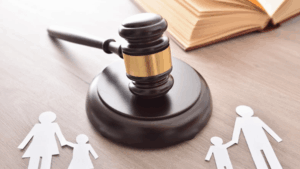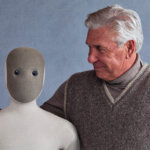Summary:
-
Spotting a car accident can prompt various reactions, from filming to helping, but knowing the right steps is crucial.
-
Assessing safety, understanding common medical issues, and knowing when to call emergency services are key in a crisis.
-
Supporting victims, using your phone responsibly, and handling traffic can all make a positive impact in a roadside emergency.
Spotting a car accident shakes most of us, even if only for a moment. You might feel a rush to help or wonder what’s actually useful right then. Some bystanders start filming before dialing for help, while others freeze or jump straight in.
Knowing what comes next can ease stress and make your actions count, whether you’re first on the scene or watching from across the street.
Stick around to get real advice—plain facts that work in busy intersections as much as rural highways.
Assessing Safety Before You Act
It’s natural to want to jump in and help or perhaps pull your phone out right away. But there might still be dangers lurking at the scene, from leaking fuel to traffic that hasn’t stopped.
Thus, always pause first and look around for hazards like broken glass, twisted metal, or sparking wires. If cars are smoking or positioned in blind spots, keep a safe distance. Be kind to alert others nearby so they do not stumble into trouble either.
Common Medical Issues After a Crash
Accidents often cause more than just visible wounds. People in a crash might face head injuries. Examples include concussions or traumatic brain injury, even if there is no blood. Broken bones and bruised muscles are frequent because seat belts and sudden stops jolt the body hard.
ADVERTISEMENT
Watch for signs of shock or trouble breathing as these may signal hidden problems inside. Even car safety features have risks. Those curious can check resources on Car Accident Airbag Injuries to learn more about how airbags can both help and harm, and ways to seek legal help for victims.
When and How to Call Emergency Services
Most of us know the instinct to reach for our phone in a crisis. But pause, check if someone else has already called. Give clear details—location, number of cars, any visible injuries—when you speak with dispatchers.
You want to stay calm so help gets there faster and responders arrive prepared. And, never hang up first; wait for instructions before ending the call, even if you think your job is done.
Supporting Victims Without Causing Harm
Nobody wants to make things worse for someone hurt in a crash. Most injuries are not always obvious, so small moves matter a lot.
Before touching or moving anyone, remember some basics:
- Only move victims if fire or another direct danger is present
- Offer words of comfort and reassurance
- Shield injured people from traffic with your body if it is safe
- Avoid giving food, water, or medicine
These simple actions can help stabilize the scene while keeping everyone as safe as possible.
Using Your Phone: Recording, Reporting, and Respect
It might make sense to pull out your phone for proof or details. But pausing before filming keeps things respectful and legal.
ADVERTISEMENT
Use good judgment:
- Record only when it helps with evidence
- Avoid sharing faces or license plates on social media
- Mute audio if people are in distress
- Share videos directly with police, not the public
A balanced approach here supports authorities without turning a painful moment into someone else’s spectacle.
Handling Traffic and Bystander Crowds
Well, that’s a job best left for the police. But before they get there, small steps can prevent extra accidents or chaos. For instance, warn drivers by waving arms or using hazard lights if safe to do so. Or, calmly ask others not to crowd injured people or block the road.
Clear instructions help emergency crews reach those who need it most. They keep traffic flowing as much as possible until help arrives.
Key Details to Note for Authorities
Good memory can make a big difference. If you saw what happened, jot down or remember:
- Vehicle makes, colors, and license plates
- Number of people involved
- Direction vehicles came from
- Notable road conditions
This info fills in the gaps for emergency workers and helps get facts straight later on.
What Not To Do at the Scene
Sometimes, even with the best intentions, people do more harm than good.
So:
- Never move an injured person unless fire or danger makes it unavoidable.
- Avoid assigning blame or getting into arguments in front of others.
- Sharing photos on social media can cross a line.
The goal is to keep everyone calm and protect privacy as much as possible.
Roadside emergencies put everyone on alert, yet thoughtful actions can make real differences. With a little preparation and the right approach, each of us stays ready to help… without stepping outside our comfort zone or skillset.









